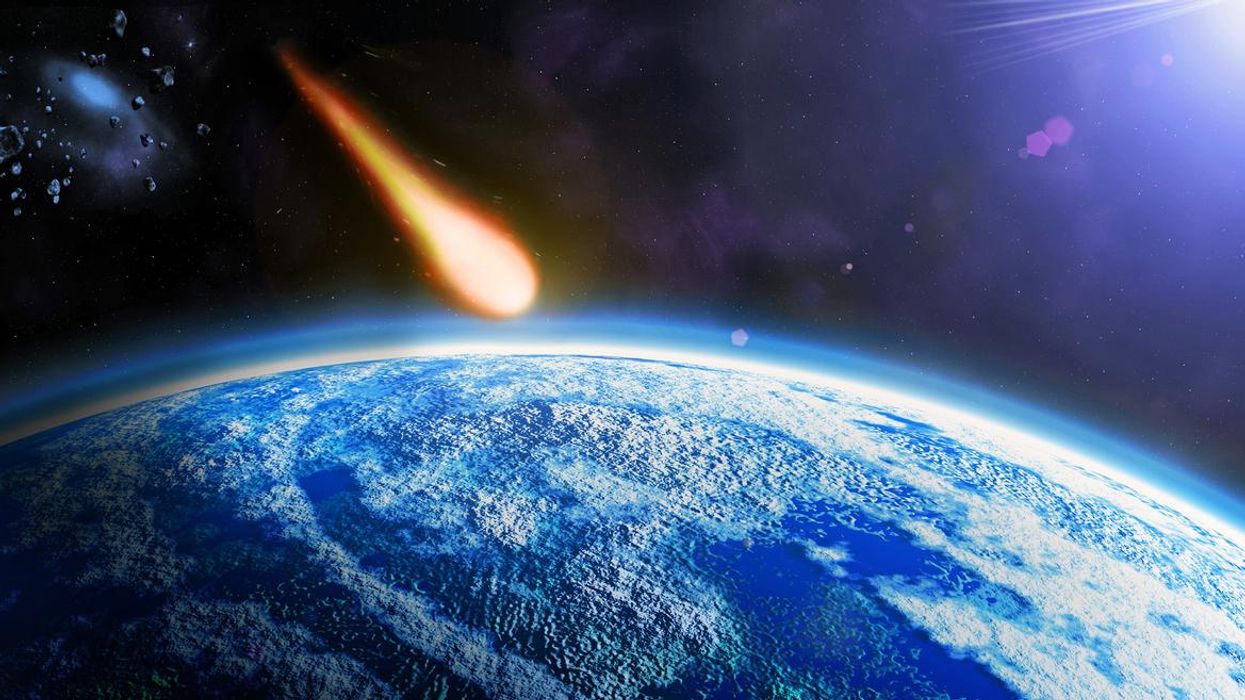News
Greg Evans
Dec 16, 2017

Picture:
Getty Images/iStockphoto
Just when you thought you could get through a month without an end of world conspiracy, one manages to speed its way across the solar system.
In recent months Nasa has been forced by conspiracy theorists to strongly dismiss claims that a mythical planet named Nibiru would appear in the sky and kick-start the apocalypse.
We say again for all those who missed it, Nibiru, aka Planet X, does not exist.
What does exist, however, is a rather large asteroid named 3200 Phaethon, which is going to pass close by to planet Earth at some point fairly soon.
There is, of course, no reason to panic as the piece of space rock will pass us safely by.

Phaethon will pass by the planet at around 10 pm GMT [5 pm EST] on Saturday night and will travel within 6.4 million miles of our little piece of the universe.
With a diameter of 5 km Nasa have labelled the floating hunk of space rock as "potentially hazardous," but to quote Douglas Adams:
Space is big. Really big. You just won't believe how vastly hugely mindbogglingly big it is. I mean you may think it's a long way down the road to the chemist's, but that's just peanuts to space.
Nasa is confident that they will be able to study the asteroid and there are hopes a 3D model can be built from the findings.
Furthermore, this will be the third-largest "hazardous" asteroid to pass this close to Earth and the closest since 1974.
In a statement Nasa writes:
3200 Phaethon as discovered on 1983 Oct. 11 by NASA's Infrared Astronomical Satellite.
With a diameter of about 5 km, Phaethon is the third largest near-Earth asteroid classified as "Potentially Hazardous" after 53319 1999 JM8 (7km) and 4183 Cuno (5.6 km).
Phaethon will approach within 0.069 au of Earth on 2017 December 16 when it will be a strong radar imaging target at Goldstone and Arecibo.
This will be the best opportunity to date for radar observations of this asteroid and we hope to obtain detailed images with resolutions as fine as 75 m/pixel at Goldstone and 15 m/pixel at Arecibo.
The images should be excellent for obtaining a detailed 3D model.
Should you wish to catch a sight of Phaethon yourself, Nasa says that it should be visible to amateur astrologers through small telescopes in areas with dark and clear skies.
Incidentally, the asteroid is named after the son of Helios, the sun god in Greek mythology, who nearly set the world on fire after losing control of his father's chariot...
... which is reassuring.
HT Lad Bible
Top 100
The Conversation (0)













